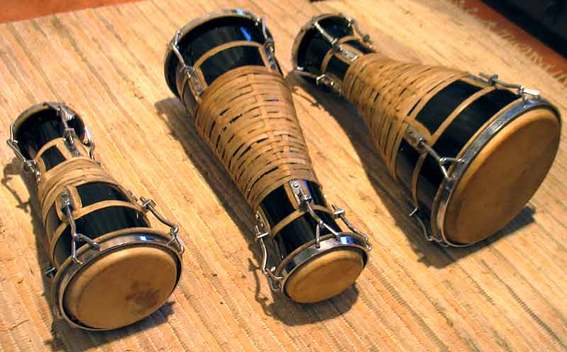By Jeremiah Aminu
The Bata dance is a cultural, spiritual, and communicative mode of expression. It goes far beyond the image of dancers adorned in colourfully patterned native attire, swinging their arms and gliding their feet to the pulsating rhythms of the Bata drum. Rather, it is a traditional performance of deep cultural and religious significance, used to communicate with and honour Yoruba deities, particularly Sango, the god of thunder, lightning, and justice.
The Bata drum, on the other hand, is an hourglass-shaped musical instrument that complements the artistic performance of the Bata dance. The two are inseparable: without the Bata drum, the Bata dance loses much of its vitality; without the Bata dance, the Bata drum’s rhythms have no vibrant physical interpretation to bring them to life.
Read Also: ADC criticises Tinubu’s frequent foreign travels amid Nigeria’s challenges
Historical Origins
The historical roots of the Bata dance and drum trace back to southwestern Nigeria, particularly among the Yoruba people. Traditionally, the Bata dance served as a medium through which Sango worshippers communicated with their deity.
Over time, it became a feature of important cultural ceremonies such as coronations, traditional weddings, and community festivals. Even today, it remains an important cultural asset, preserving Yoruba spiritual and artistic traditions.
The Bata Drum: Craftsmanship and Components
The Bata drum frequently appears in Yoruba oral traditions associated with Sango. Its construction requires intricate craftsmanship. The drum’s wooden hourglass body (igi ilu) is hand-carved from durable wood—often mahogany, iroko, pear, or ara. After being dried in the sun, the frame is covered with leather, which is fastened using broomsticks (egi ilu or igbale gbaro).
Next comes the wirework (osan), which binds the drum membrane and decorates the instrument. A dark substance called iro is then applied to the leather to alter and control its percussive tones. Finally, the drumsticks (bulala) are used to strike both leather faces of the drum, producing its distinct rhythms.
The Bata drum is actually a set of three instruments:
- Iya – the largest drum.
- Itotele – the medium-sized drum.
- Okonkolo – the smallest drum.
Beyond Nigeria: The Cuban Connection
The Bata drum has travelled beyond Nigeria, notably to Cuba, where it plays a central role in the Afro-Cuban religion of Santería (Regla de Ocha). This cultural transfer occurred during the 19th century, when thousands of Yoruba people were taken to Cuba during the transatlantic slave trade. They brought with them their religious practices, including Bata drumming.
The Cuban Bata drum shares similarities with its Nigerian counterpart. It is carved from cedar or mahogany and features a small head (chacha) and a large head (enu). A wax-like substance (ida or fardela) is applied to the larger heads of the iya and itotele to control tone. Additionally, two belts with bells (chaguoro) are fastened around the iya for ceremonial purposes.
In Santería, the Bata drum is believed to hold spiritual power during rituals. When the leather membranes are struck and sacred rhythms played, worshippers believe the sound can summon the Orishas, who may then possess participants. This state of possession allows worshippers to communicate and connect directly with the deities.
Finally, the Bata dance and drum remain an integral part of Yoruba cultural identity. They are both artistic and spiritual instruments, used to communicate with deities, celebrate heritage, and reinforce community bonds.
Today, the Bata drum has been integrated into modern musical genres, including Fuji, Juju, and Alujo in Nigeria, as well as Latin jazz internationally. This fusion highlights the enduring relevance of the Bata tradition in cultural, religious, and entertainment spheres.



